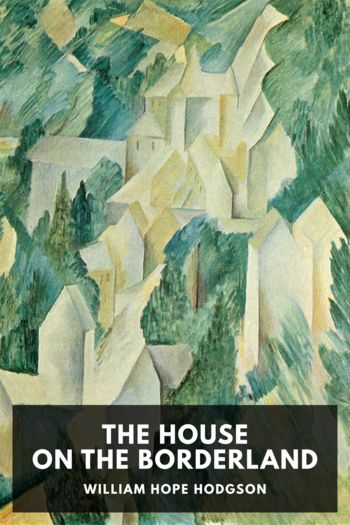Gluck by Diana Souhami (most interesting books to read .TXT) 📗

- Author: Diana Souhami
Book online «Gluck by Diana Souhami (most interesting books to read .TXT) 📗». Author Diana Souhami
All Gluck’s pictures were sold and by 1926 she had enough material for a new show. At the time of her first exhibition she moved from her black and white rooms in Earls Court to a large studio in Tite Street, Chelsea, formerly used by Whistler. Craig was still with her, though more tenuously as Gluck began to mix in smart society. The same year, Romaine Brooks and Gluck arranged to do portraits of each other. Romaine called her work, which was about three feet by two feet, ‘Peter, a young English girl’, and exhibited it in her 1925 exhibition along with pictures of the poet Gabriele d’Annunzio, with whom she was having a tortuous relationship, and ‘Una, Lady Troubridge’, who lived with Radclyffe Hall. Romaine was twenty years older than Gluck and already notorious for her wealth, lesbian affairs with Ida Rubinstein and Natalie Barney and unorthodox life in the Paris salons.
She went to Gluck’s Tite Street studio for the reciprocal portrait. ‘The elephant has come to the temple,’ Gluck remarked of the visit. She thought Romaine’s work technically and psychologically inferior to her own and scorned the ‘lesbian haute-monde’ as she called Romaine’s social circle. ‘All those people were very boring,’ she said of them.20 Gluck wanted to do a life-size picture and primed a six foot canvas. ‘Romaine Brooks was a big woman’, she said in defence of her choice of size. The encounter was not happy:
Romaine wasted so much sitting time in making a row that at last I was only left an hour in which to do what I did – but my rage and tension gave me almost superhuman powers … she insisted I should do one of my ‘little pictures’. I refused so she left me with the unfinished portrait. However, I had to give away many photographs of it to her friends!21
Eventually she used the canvas for something else.
Gluck called her 1926 exhibition at The Fine Art Society ‘Stage and Country’. It was a reflection of her two worlds – the parochialism and peace of Cornwall and the theatre, sophistication and fun of London. Those were the dancing years, and almost every London hotel or restaurant had a band or floor show. Many of the smart eating places were owned by Gluck’s family, so she had easy access to café lifé. Lyons Corner House in Coventry Street had an orchestra on each floor. Jack Hylton’s band, of ‘Bye Bye Blackbird’ fame, played at the Piccadilly Hotel. In 1924 Gluck’s uncle Montague asked C. B. Cochran to stage a cabaret in the grill room of the Trocadero in Shaftesbury Avenue. ‘In my career as a showman there is no association which has given me greater pleasure than that with Messrs Lyons,’ Cochran wrote in his memoirs.22
For the next fifteen years, up to the outbreak of war, his cabarets, called Champagne Time, Supper Time, Going to Town and the like, ran continuously. They were a show-case for talent. There was music by Richard Rogers, Cole Porter, Roger Quilter; sketches by Noel Coward; choreography by Léonid Massine, Frederick Ashton and Balanchine; sets and costumes by Gladys Calthrop, Chrétien Berard, Rex Whistler, Edmund Dulac and Norman Wilkinson; ‘girls’ like Anna Neagle and Alice Delysia singing ‘Poor Little Rich Girl’ and ‘All Alone’. The cabarets featured singers, dancers, acrobatists, contortionists, clowns and comic turns. And Cochran’s guests at his first-night table were the focus of the society columnists:
Among my guests at my first-night table have been Elisabeth Bergner, Tallulah Bankhead, Ivor Novello, Douglas Fairbanks, father and son, Mary Pickford Roma June … Diaghileff and his stars …23
The London correspondent of the Manchester Guardian described the Trocadero in 1926 as ‘the meeting place of those who wore evening clothes and those who did not … a real institution recalling the position of Evans’s Supper Rooms of Thackeray’s days.’24 Thirteen of the pictures in Gluck’s ‘Stage and Country’ exhibition were of the Cochran reviews: the dancers, musicians and audience. Through these pictures her work connects to the gaiety of the twenties.
Opposite the Trocadero was the London Pavilion, advertised in neon as ‘The Centre of the World’. There, in 1925, Cochran staged ‘On with the Dance’, London’s first great dancing show. ‘For variety of terpsichorean effect and speed, I doubt if it has ever been excelled’ wrote Cochran of it. ‘Mr Cochran’s Young Ladies’ had to be neat steppers. Laurie Devine, one of the first acrobatic dancers, stood on her elbows, Terri Storri did smart contortionist work, Florence Desmond, ‘Dessy’, in a costume designed by Doris Zinkeisen, with a top hat, waistcoat and cheeky gloves and duotone boots did a stylized cake-walk which always got a tremendous round of applause. And they all did the can-can. Gluck saw ‘On with the Dance’ again and again and sketched behind the scenes. Her paintings record the show.
The stage at the Pavilion was the size of a large dining table, there was one narrow entrance and flats, props and large hoop dresses had to be suspended from the flies. She painted ‘Dessy’ doing her cake-walk in a beam of light, Massine, waiting for his cue, Ernest Thesiger, described as ‘London’s most versatile actor,’ waiting to go on stage – with Douglas Byng he did a transvestite act – the saxophonist Emmett Baker, ‘The Three Nifty Nats’ doing a song and dance routine. Gluck later described this as one of the true art deco paintings. The stage set was





Comments (0)